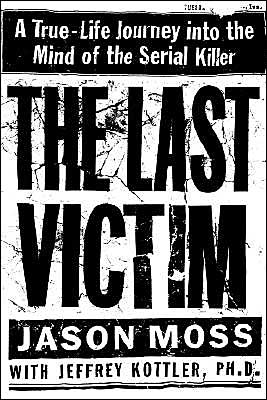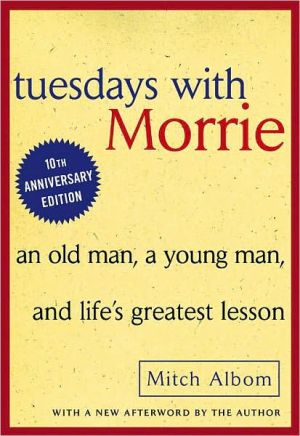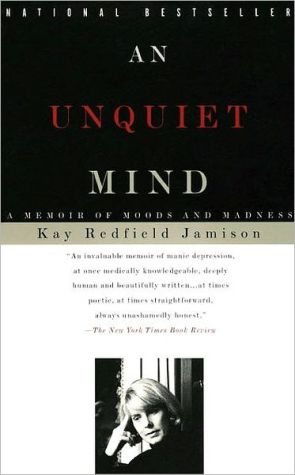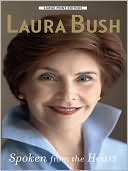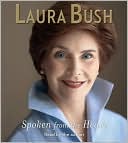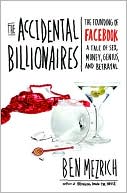The Last Victim
The twisted, but fascinating, mind of a serial killer is revealed with terrifying consequences in this astonishing and shocking exploration. with 20 b&w photos.
Search in google:
In the vein of John Douglas's bestselling Mind Hunter and Robert Ressler's Whoever Fights Monsters, this is a true, first-person account of a daring--and ultimately life-threatening--attempt to communicate with seven of the world's most notorious serial killers. Publishers Weekly The subtitle is a slight bit of misdirection: Moss offers us a journey into his own mind, into the mind of someone obsessed with the minds of serial killers. As a UNLV freshman, he corresponded with John Wayne Gacy, then on Death Row. He also accepted collect calls from Gacy, who attempted to talk him into committing incest with his younger brother. Enthralled by his proximity to sociopathology, Moss expanded his list of "psycho pen pals" to include Charles Manson, Richard Ramirez (aka the Night Stalker) and Jeffrey Dahmer. His impulse was to get inside the criminal mind. To do so, he sometimes found it necessary to tailor the truth about himself to fit what he felt the killers wanted to hear: he claimed to be the "grand priest of a cult" in his letters to Ramirez. Despite suffering nightmares triggered by his grisly correspondents, Moss, after contacting the FBI agent who handled Gacy, flew to Illinois to spend his spring break "alone in a locked, unmonitored room with a psychopath who'd raped, tortured, and strangled many boys just like me." Moss succeeds in contrasting his family life and his prisoner contacts, but the insight he offers into the internal logic of the serial killing mind is limited. Moreover, some readers will wonder about his own motivations, especially when he holds forth about the market value of Dahmer's autograph and otherwise participates in the strange, ghoulish culture of serial killer celebrity. Psychotherapist Kottler, one of Moss's UNLV instructors, contributes both a prologue and an afterword. Eight pages of drawings and photos. Major ad/promo. (Apr.)
\ \ \ \ Chapter One\ \ \ The Bookstore\ There's a little strip mall in an older, residential area in Las Vegas, far from the chaos of the other, more famous Strip. From the university, it's a straight shot down Flamingo Road, a major artery of the city named after Bugsy Siegel's original resort.\ Typical of such malls, the row of shops contains an insurance agency, a hobby shop, an army recruiting office, a tuxedo rental outlet, a beauty shop, a used bookstore, and the obligatory Chinese restaurant with a $4.75 lunch special. There's also a kickboxing studio, which is why on this particular day in August 1993 I happened to be there.\ I was early for my appointment with my karate instructor and I needed a place to escape the heat. Assessing my options, the bookstore seemed especially inviting—cool and quiet inside, and with plenty to occupy my attention. I was already feeling a bit stressed from my first week as a university student, so I welcomed a few minutes to literally chill out.\ As I began strolling the aisles, I noticed I was one of the store's few customers. Even so, I was invisible to the bored cashier, who was alternately thumbing through a book and taking inventory of others lying on the counter. In fact, there were books everywhere, some still resting in boxes, others neatly organized on the shelves. It was as if the owner couldn't quite figure out how to make inflow and outflow mesh.\ Because true crime had been an interest of mine since my early teens, I soon found myself in the store's crime section, staring at titles that somehow seemed familiar: Killer Cults, FBI Killer, Evil Harvest, Brother inBlood. I couldn't help noticing that, more often than not, "blood" was the common denominator: Blood Echoes, Blood Games, Blood Lust, Blood Sister, Blood Warning. Whoever came up with these titles seemed to have a thing for blood.\ Like many people, I was secretly—and a bit guiltily—fascinated by such material. It can be exciting to peek through your fingers at something forbidden and terrible. Just ask the millions of rubberneckers who slow down at accident scenes, hoping to catch a glimpse of a body.\ Among the hundreds of books that screamed with promises of blood and pain, one in particular caught my interest: Hunting Humans. A big, thick encyclopedic volume, it presented profiles of some of the world's most famous serial killers. As I stood in the narrow aisle turning pages, I began reflecting on how well camouflaged these predators are, prior to being caught. They look like anyone else, live apparently normal lives, often appear charming, sociable, and productive. But at the same time, they stalk and kill people, sometimes torturing and mutilating them.\ I wondered what it must be like to look in the mirror and realize you are the bogeyman. How are these people able to live with themselves?\ I was jolted out of my reverie by the sound of voices coming from across the aisle. "Do you have a store credit?" I could hear the cashier ask someone. I didn't catch the answer because, in my mind, an idea was beginning to form. It was something on the edge of my consciousness—something I couldn't grab on to.\ The title of another book captured my attention: The Killer Clown. Now, that's interesting, I thought, reaching for it. I'd always been afraid of clowns.\ As a child my most frequent nightmare took place at my grandparents' house. In the dream I was supposed to be taking a bath, but a strange sound drew me out of the tub to investigate. I started walking toward the stairs when I heard a scream, followed by a liquidy cackle. Looking down the stairs, I saw my grandmother sprawled out on the floor, blood slowly dripping from her mouth. Somewhere close, I heard an eerie laughter.\ I turned in the direction of the voice and was startled to see a clown sitting on the stairwell's balcony, laughing at me. I particularly remember the big red smile on his face. At that point, I'd always wake up.\ My parents and grandparents tell me that, as a kid, whenever I'd see a clown, I'd start crying in fear. Even today, there's something about that painted-on happy face and exaggerated show of good cheer that I don't trust. There's something about the masks that clowns wear—I can't help feeling that the intention is to deceive. Call me paranoid, but I find myself wondering: Who's the real person hiding beneath that makeup?\ The idea that a killer would dress himself up as a clown to entertain sick children by day, and then stalk the streets for prey at night, seemed inconceivable to me. Yet I could identify with people who led double lives. How many times had I exuded confidence when taking an exam, or engaging in a debate, when, in fact, I was less than sure of myself?\ I decided to buy both books—the one about hunting humans, and the other about the killer clown—even though it would put a crimp in my student budget. At the time, I had no idea the true cost would ultimately be much higher.
\ Publishers Weekly - Publisher's Weekly\ The subtitle is a slight bit of misdirection: Moss offers us a journey into his own mind, into the mind of someone obsessed with the minds of serial killers. As a UNLV freshman, he corresponded with John Wayne Gacy, then on Death Row. He also accepted collect calls from Gacy, who attempted to talk him into committing incest with his younger brother. Enthralled by his proximity to sociopathology, Moss expanded his list of "psycho pen pals" to include Charles Manson, Richard Ramirez (aka the Night Stalker) and Jeffrey Dahmer. His impulse was to get inside the criminal mind. To do so, he sometimes found it necessary to tailor the truth about himself to fit what he felt the killers wanted to hear: he claimed to be the "grand priest of a cult" in his letters to Ramirez. Despite suffering nightmares triggered by his grisly correspondents, Moss, after contacting the FBI agent who handled Gacy, flew to Illinois to spend his spring break "alone in a locked, unmonitored room with a psychopath who'd raped, tortured, and strangled many boys just like me." Moss succeeds in contrasting his family life and his prisoner contacts, but the insight he offers into the internal logic of the serial killing mind is limited. Moreover, some readers will wonder about his own motivations, especially when he holds forth about the market value of Dahmer's autograph and otherwise participates in the strange, ghoulish culture of serial killer celebrity. Psychotherapist Kottler, one of Moss's UNLV instructors, contributes both a prologue and an afterword. Eight pages of drawings and photos. Major ad/promo. (Apr.)\ \ \ \ \ Kirkus ReviewsA bizarre first-person account of a young man's nearly disastrous obsession with serial killers. As a freshman at the University of Nevada in Las Vegas, Moss, who dreamed of a career in law enforcement, conceived the idea of writing to serial killers on death row, hoping to gain their trust and discover what made them tick. His most extensive contact was with John Wayne Gacy, who had raped and murdered 33 teenage boys. He also corresponded with Charles Manson, Jeffrey Dahmer, Richard Ramirez (a.k.a. the Night Stalker), and other killers whom he admired for their nerve. To gain Gacy's attention—death-row inmates of Gacy's notoriety are besieged by would-be correspondents—Moss posed as a sexually confused and highly impressionable boy, matching himself to the profile of Gacy's victims. When this ploy worked, Moss felt that he had psyched out the killer and assumed that he would be able to manipulate and control him. Soon, however, Moss found himself identifying with, even sympathizing with Gacy, who began telephoning him regularly. When Gacy invited him for an expense-paid visit, Moss discovered that the guards behaved more like servants and left him alone and unobserved in the same room with the convicted murderer. Though aging and handcuffed, Gacy was able to break Moss down and turn him into the confused and compliant young man he had been pretending to be, demonstrating for him not only how a predator operates but how a potential victim feels. Fortunately, Moss, who could easily have become Gacy's last victim, escaped with only his ego bruised. A prologue and afterword by psychologist Kottler comment on both Moss's behavior and society's propensity for glorifying violence andturning serial killers into celebrities. An engrossing and gut-wrenching read. (20 b&w photos) .\ \
